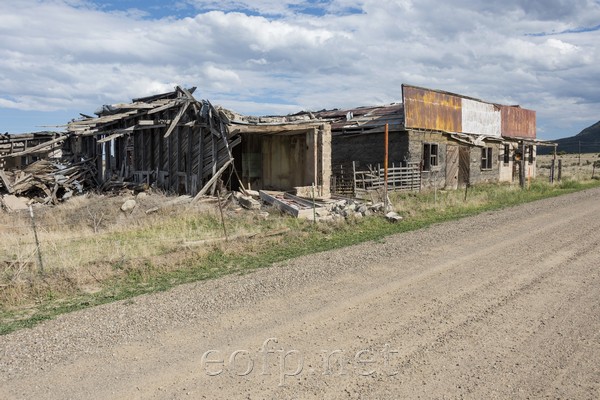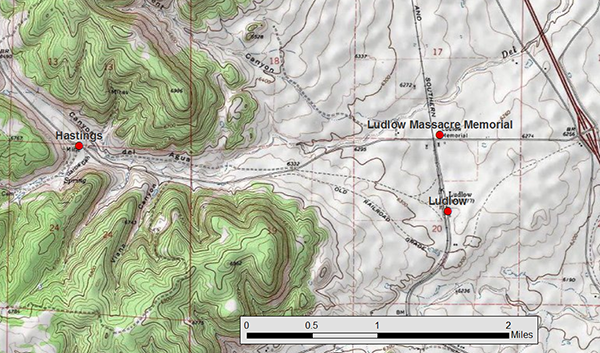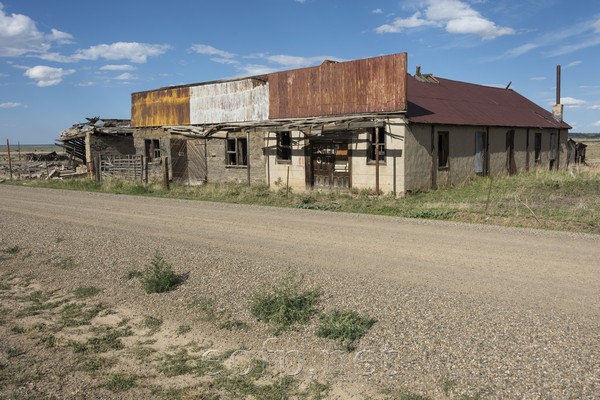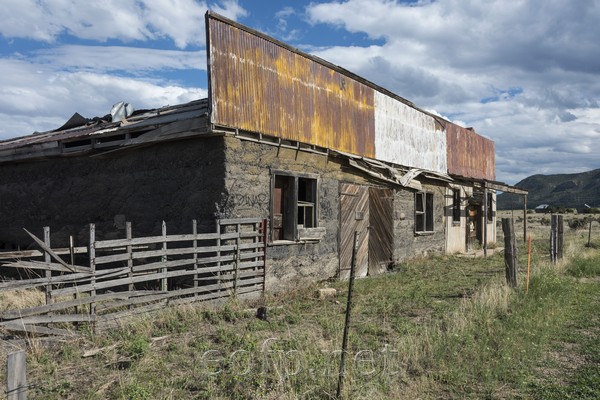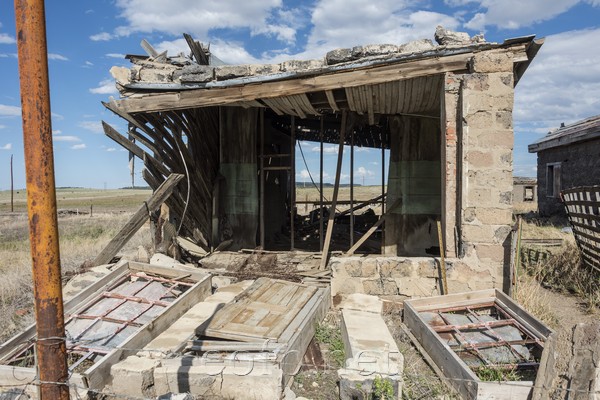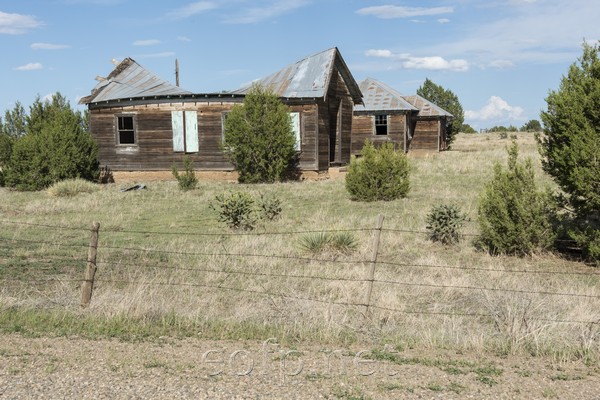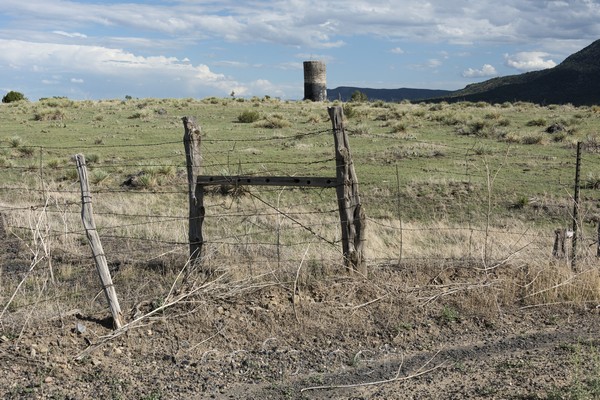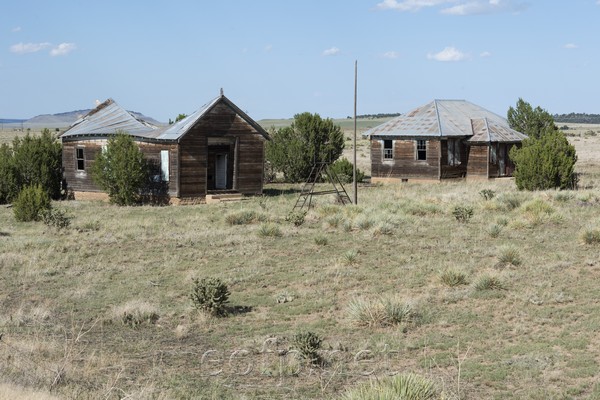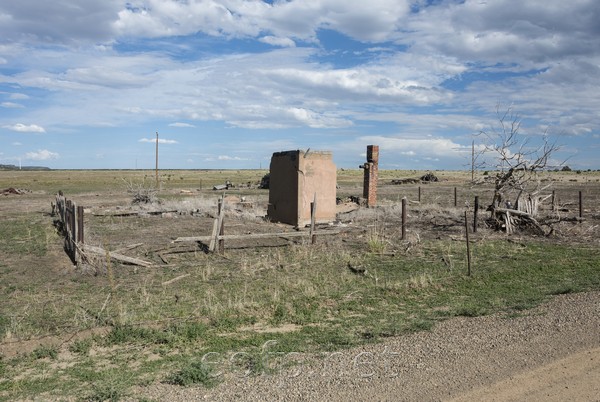8/19/2019
Ludlow Colorado
The ghost town, Ludlow Colorado, is about a mile from the Ludlow Massacre Memorial. What I find most interesting about Ludlow is the absence of any marking. sign or memorial at the site of the town. This is in contrast with the large monument and interpreted site where the massacre took place. It's not that the town of Ludlow deserves to be remembered more than any of the other countless abandoned and forgotten small towns across the US. It is the proximity to both the Ludlow Massacre Memorial and the site of the Hastings Mine Disaster that make Ludlow unique.
Ludlow developed at a railroad junction near the mouths of two canyons at the very eastern edge of the Rocky Mountains. Ludlow was one of a few towns that provided services to the coal mines and mining towns of the southern Colorado coal fields. That coal field stretches from Walsenburg Colorado to the New Mexico border along the eastern slope of the Sangre de Cristo Mountains. Trinidad Colorado was and is the biggest commercial center serving the district. The mining district was first developed by railroads that used the coal as fuel in the late 1870s. In the 1890s, the Rockefeller backed Colorado Fuel and Iron company consolidated ownership of the district. Production and employment in the district expanded as the coal became more frequently used in precious metal smelters in Denver and Pueblo. It was also converted to metallurgical coke for use in CF&I's expanding Pueblo steel mill.
The coal in the southern district was generally accessed via exposed seams in small canyons. By the early 1900s, many dozens of small and large mines with associated mining camps and towns had been developed in the canyons on the east side of the mountains. Almost all of the housing and land around the mines was owned and controlled by CF&L. Along the base of the mountains, near the main rail line, several towns developed as transfer points and supply centers. The land and homes in those towns; Ludlow, Trinidad, Aguilar and Walsenburg, was owned by individuals. It was because Ludlow was not owned by CF&L that striking miners camped near there in 1914 at the height of the 1913-1914 coal field labor struggle. The miners and their families had been evicted from their company owned homes near the mines. In spite of the fact that they were camped away from CF&L property, National Guard troops and CF&L guards opened fire on them on April 20th 1914.
Other than being the closest town to the massacre site, Ludlow was not much involved with the unrest of 1913-1914. There was never any coal mining or processing in the immediate area of Ludlow. The closest mine was in Hastings about 3 miles away. Most of the coal mines in the southern district had closed by the 1950s. As CF&L or other companies closed the mines, they typically sold the associated land they owned in very large parcels. Other than rare exceptions like Cokedale, the mining companies did not offer to sell the housing in the coal camps to the miners. They evicted everyone and leveled all of the structures. Today, the foundations of miners' houses and other mining structures are seemingly everywhere in the canyons that head up into the Sangre de Cristo Mountains. Closing the mines and evicting the people who lived near the mines had a devastating impact on the commercial centers at the base of the mountains. Trinidad and Walsenburg's populations were halved. Aguilar's population was reduced by two thirds. Ludlow has been completely abandoned.
All content on these pages Copyright Mark Hedlund 2012-2019. All rights reserved. Use in school projects and with links on social media is always okay. Please send me an email to request permission for any other use: hedlunch@yahoo.com Non-exclusive commercial publication rights for most photos is $25 per image.

